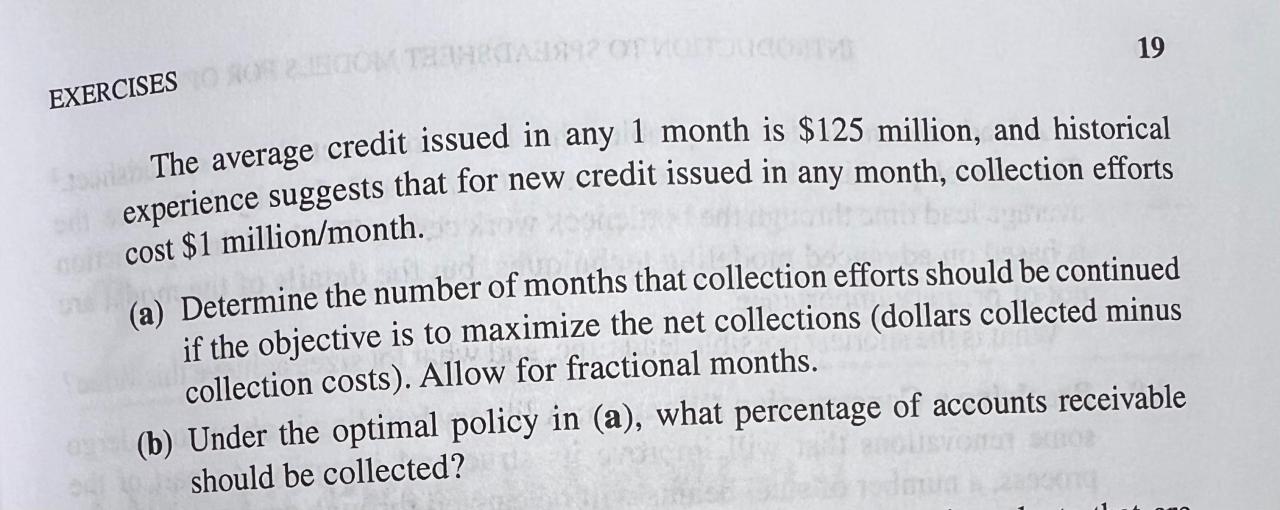
Credit cards balance transfer offers can be a lifesaver for those burdened with high-interest debt. By transferring your balance to a card with a lower APR, you can potentially save hundreds, even thousands, in interest charges over time. But before you jump in, it’s crucial to understand the ins and outs of these offers to make sure you’re getting the best deal.
This guide will walk you through everything you need to know about credit card balance transfers, from understanding the different types of offers to choosing the right one for your needs. We’ll also discuss the potential risks and offer tips for managing your debt effectively after a transfer.
Introduction to Credit Card Balance Transfers
A credit card balance transfer is a financial maneuver that lets you move outstanding balances from one credit card to another. It’s essentially a way to consolidate your debts and potentially save money on interest charges.
Balance transfers work by allowing you to transfer the balance of your existing credit card to a new credit card, often with a lower interest rate. This can be a beneficial strategy for those seeking to reduce their debt burden and save on interest costs.
Benefits of Balance Transfers
Balance transfers offer several potential benefits, including:
- Lower Interest Rates: One of the primary advantages of balance transfers is the opportunity to secure a lower interest rate on your existing debt. By transferring your balance to a card with a lower APR, you can significantly reduce the amount of interest you accrue over time.
- Potential Savings: Lower interest rates translate to lower monthly payments and potentially faster debt repayment. By minimizing interest charges, you can save money and free up cash flow for other financial goals.
- Debt Consolidation: Balance transfers can help simplify your debt management by combining multiple balances into a single account. This can streamline your payment process and make it easier to track your overall debt progress.
Scenarios Where Balance Transfers Are Beneficial
Balance transfers can be particularly advantageous in the following scenarios:
- High-Interest Debt: If you have a credit card with a high APR, transferring your balance to a card with a lower interest rate can save you substantial amounts in interest charges. For instance, if you have a $5,000 balance on a card with a 20% APR, transferring it to a card with a 5% APR can save you hundreds of dollars in interest over the life of the debt.
- Consolidation of Multiple Debts: If you have multiple credit card balances, transferring them to a single card with a lower interest rate can simplify your debt management and potentially reduce your overall interest burden.
- Debt Repayment Strategy: Balance transfers can be a valuable tool in a debt repayment strategy, particularly if you’re aiming to pay down debt faster and save money on interest. By consolidating your debt and securing a lower interest rate, you can accelerate your repayment progress.
Understanding Balance Transfer Offers

Balance transfer offers can be a valuable tool for managing debt, allowing you to consolidate high-interest debt from other credit cards onto a new card with a lower interest rate. This can save you money on interest charges and help you pay off your debt faster. However, it’s crucial to understand the terms and conditions associated with these offers to make informed decisions.
Types of Balance Transfer Offers
Balance transfer offers typically fall into two main categories: 0% APR offers and promotional periods.
- 0% APR offers: These offers provide a temporary period during which you can transfer your balance to the new card and avoid paying any interest charges. This period can range from a few months to several years, depending on the offer.
- Promotional periods: These offers provide a lower interest rate on transferred balances for a set period. While the interest rate may not be 0%, it’s still significantly lower than the standard APR on the new card.
Key Terms and Conditions
Several key terms and conditions are associated with balance transfer offers that you should carefully review before transferring your balance.
- Transfer fees: Many balance transfer offers come with a transfer fee, typically a percentage of the balance you transfer. This fee can vary depending on the issuer and the offer.
- Minimum payments: You’ll still need to make minimum payments on your balance transfer card, even if you have a 0% APR offer. The minimum payment amount is usually calculated based on your total balance and the APR.
- Eligibility requirements: Credit card issuers often have specific eligibility requirements for balance transfer offers. These requirements may include your credit score, credit history, and income.
Comparing Balance Transfer Offers
Here’s a table comparing the features and benefits of different balance transfer offers from major credit card issuers:
| Issuer | 0% APR Period | Transfer Fee | Minimum Payment | Eligibility Requirements |
|---|---|---|---|---|
| Issuer A | 18 months | 3% of balance transferred | $25 or 2% of balance, whichever is greater | Good credit score (at least 670) |
| Issuer B | 12 months | 0% | $50 or 1% of balance, whichever is greater | Excellent credit score (at least 720) |
| Issuer C | 21 months | 2% of balance transferred | $30 or 2.5% of balance, whichever is greater | Fair credit score (at least 620) |
Factors to Consider When Choosing a Balance Transfer Offer
Balance transfer offers can be a valuable tool for saving money on credit card debt, but it’s important to carefully consider all the factors involved before making a decision. Choosing the right balance transfer offer can help you save money on interest charges, but making the wrong choice could lead to higher costs in the long run.
Understanding the Key Factors
It is crucial to understand the key factors that influence the effectiveness of a balance transfer offer. These factors include the annual percentage rate (APR), transfer fees, promotional period length, and eligibility criteria.
- APR: The APR is the interest rate you’ll be charged on your transferred balance. A lower APR means you’ll pay less interest over time. Look for offers with a 0% APR introductory period, which can help you save significantly on interest charges.
- Transfer Fees: Most balance transfer offers charge a fee for transferring your balance. This fee is typically a percentage of the balance transferred. Compare the transfer fees of different offers to find the most affordable option.
- Promotional Period Length: The promotional period is the time during which you’ll enjoy the 0% APR. This period can range from a few months to several years. Choose an offer with a promotional period that gives you enough time to pay off your balance.
- Eligibility Criteria: Make sure you meet the eligibility criteria for the balance transfer offer. Some offers have minimum credit score requirements or restrictions on the types of credit cards that can be transferred.
Comparing Offers
It is essential to compare offers from multiple issuers to find the best deal. Use online comparison tools or contact credit card companies directly to gather information. Consider factors such as the APR, transfer fees, promotional period length, and eligibility criteria.
Potential Risks
While balance transfers can be a great way to save money on interest, there are some potential risks to be aware of.
- Late Payment Fees: If you miss a payment during the promotional period, you may be charged a late payment fee.
- Higher Interest Rates After the Promotional Period: After the promotional period ends, the interest rate on your transferred balance will revert to the standard APR, which could be significantly higher.
How to Apply for a Balance Transfer

Applying for a balance transfer is a straightforward process that involves checking your eligibility, completing an application, and transferring the balance. This guide will walk you through the steps involved, ensuring you understand the process and make informed decisions.
Eligibility for a Balance Transfer
Before you apply for a balance transfer, it’s essential to determine if you meet the eligibility criteria. Most balance transfer offers have specific requirements, which may include:
- Good credit score: Credit card issuers typically require a good credit score to qualify for a balance transfer. This ensures that you are a responsible borrower and have a history of repaying your debts on time.
- Available credit limit: You need sufficient available credit on your new card to accommodate the balance you wish to transfer. The new card issuer will review your credit utilization ratio, which is the amount of credit you use compared to your available credit limit.
- No recent late payments: A history of late payments can negatively impact your credit score and make you ineligible for a balance transfer offer.
Completing a Balance Transfer Application
Once you’ve determined your eligibility, you can proceed with the application process. Typically, you can apply for a balance transfer online, by phone, or through mail. Here’s what you’ll need to provide:
- Personal information: This includes your name, address, Social Security number, and date of birth.
- Credit card details: You’ll need to provide the account number and balance of the credit card you wish to transfer.
- Income information: Some issuers may request your income information to assess your ability to repay the transferred balance.
Transferring the Balance
After your application is approved, the balance transfer process typically involves the following steps:
- Confirmation: The new credit card issuer will send you a confirmation of your balance transfer request.
- Balance transfer fee: You may be charged a balance transfer fee, usually a percentage of the transferred balance. This fee is typically waived for a limited time as a promotional offer.
- Balance transfer completion: The new credit card issuer will transfer the balance from your old card to your new card. This may take a few business days to complete.
Managing Your Credit Card Balance After a Balance Transfer
After successfully transferring your balance, it’s crucial to manage your credit card balance effectively. Here are some key tips:
- Pay more than the minimum: Make sure to pay more than the minimum payment due each month to reduce your balance faster. This will help you save on interest charges and pay off your debt quicker.
- Avoid new purchases: While you’re paying off your balance transfer, it’s best to avoid making new purchases on the card. This will prevent your balance from growing and make it harder to pay off your debt.
- Monitor your credit score: Regularly check your credit score to ensure that your balance transfer hasn’t negatively impacted it. This will help you identify any potential issues and take corrective measures.
Alternatives to Balance Transfers
While balance transfers can be a great way to save money on interest, they’re not the only option for managing credit card debt. There are other methods that may be more suitable depending on your individual circumstances.
Debt Consolidation Loans
Debt consolidation loans involve taking out a new loan to pay off multiple debts, including credit cards. These loans typically have lower interest rates than credit cards, making them a good option for saving money on interest.
- Advantages:
- Lower interest rates
- Simplified debt management with one monthly payment
- Potential for a fixed interest rate, providing predictability
- Disadvantages:
- May require a good credit score to qualify
- Could lead to higher total interest paid if the loan term is longer
- Risk of incurring new debt if not used responsibly
Balance Transfer Checks, Credit cards balance transfer offers
Balance transfer checks are offered by some credit card companies to help you transfer balances from other credit cards. These checks allow you to write a check to your other credit card company, effectively transferring the balance to your new card.
- Advantages:
- Can be a convenient way to transfer balances without going through a formal balance transfer process
- May offer introductory 0% APR periods, allowing you to pay down debt without interest charges
- Disadvantages:
- May have higher fees compared to traditional balance transfers
- The interest rate after the introductory period can be higher than the original card’s interest rate
Wrap-Up

In conclusion, credit card balance transfers can be a valuable tool for reducing your debt and saving money on interest charges. By carefully evaluating the terms and conditions of each offer and choosing the right card for your situation, you can potentially make significant progress towards financial freedom. However, it’s important to remember that balance transfers are not a quick fix for debt problems. You must commit to responsible debt management practices to fully reap the benefits of this strategy.
FAQs: Credit Cards Balance Transfer Offers
How long do balance transfer offers last?
Balance transfer offers typically have a promotional period, usually between 6 and 18 months, during which you’ll enjoy a 0% APR. After the promotional period, the standard APR for the card kicks in, which can be significantly higher.
Can I transfer my entire balance?
You can usually transfer your entire balance, but there may be a limit on the amount you can transfer. Check the terms and conditions of the offer to determine the maximum transfer amount.
What happens if I miss a payment during the promotional period?
Missing a payment during the promotional period can cause the 0% APR to revert to the standard APR. This means you’ll start accruing interest on your entire balance at a much higher rate. It’s crucial to make your payments on time to avoid this scenario.
Are there any fees associated with balance transfers?
Yes, most balance transfer offers charge a fee, usually a percentage of the transferred balance. This fee can range from 3% to 5% and should be factored into your decision-making process.





